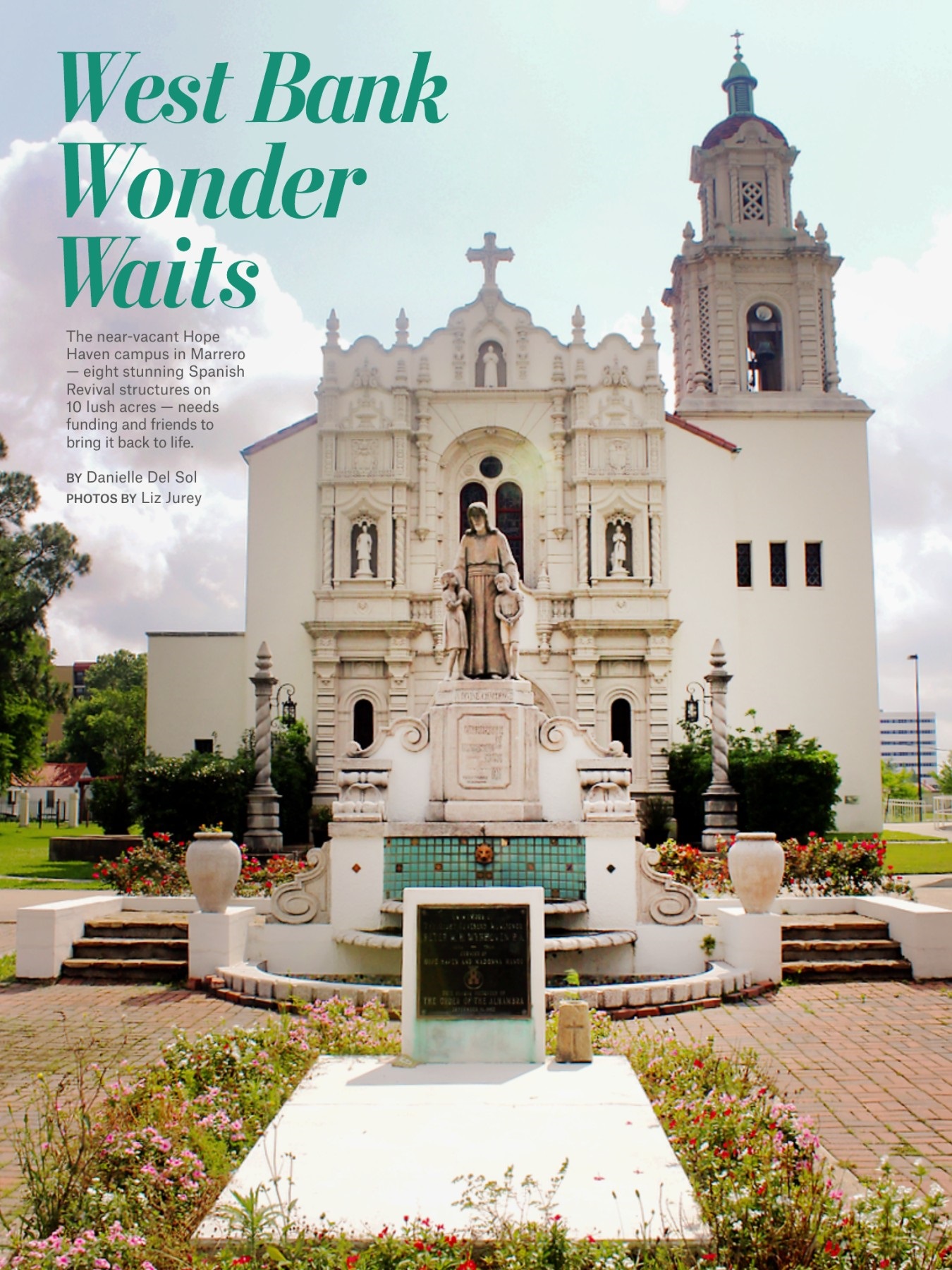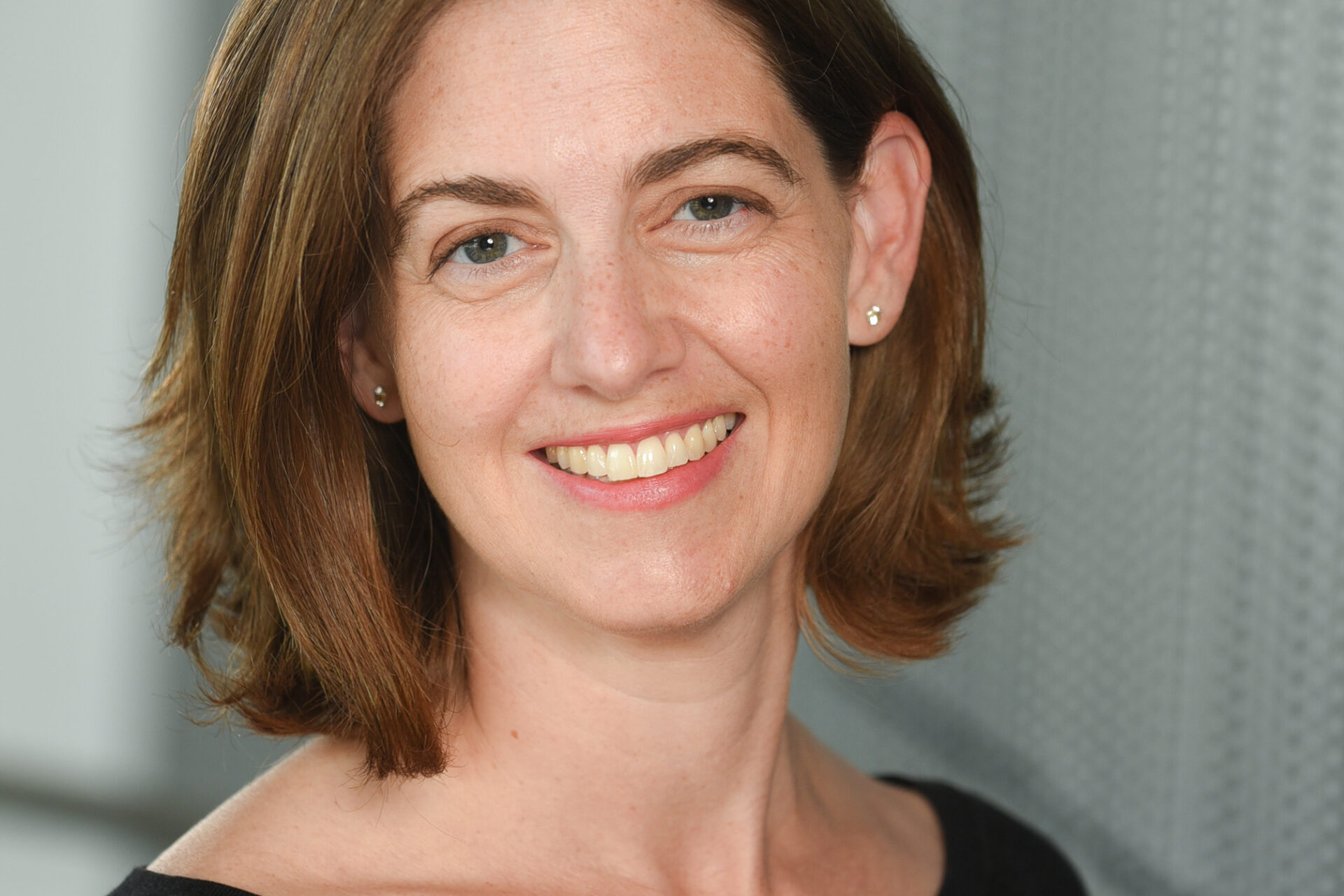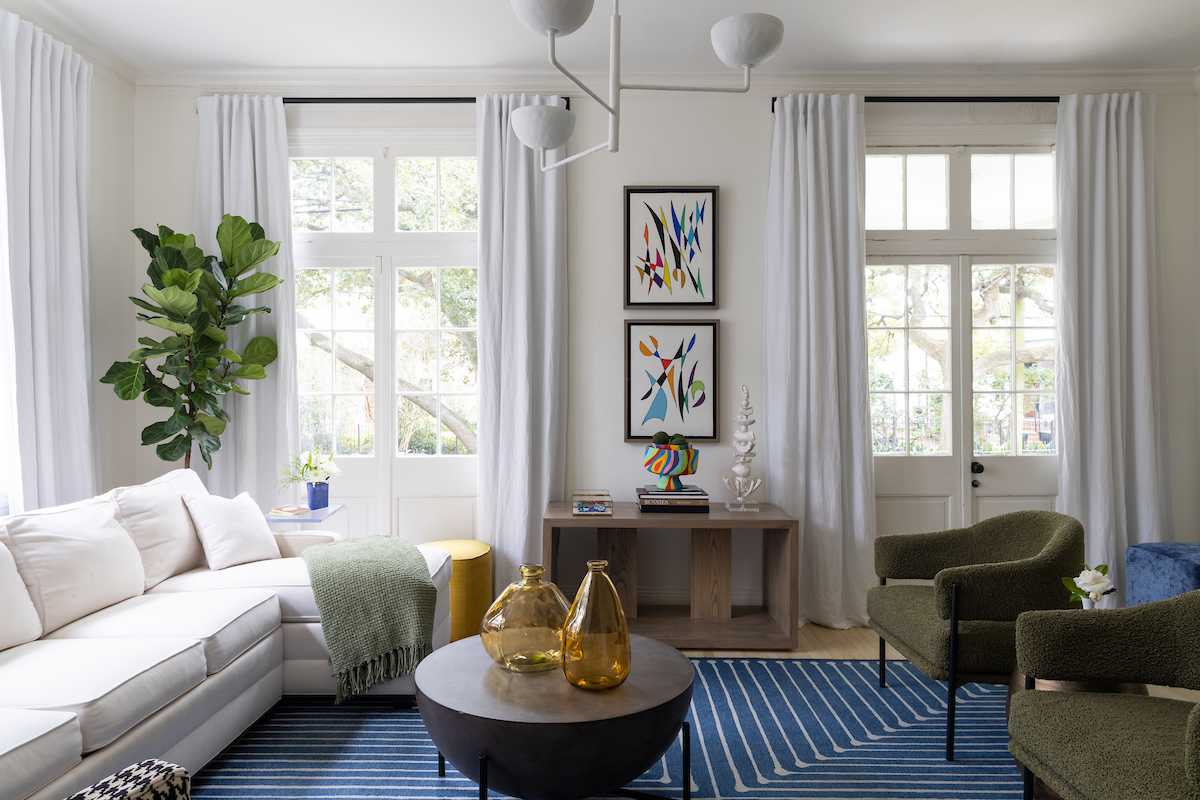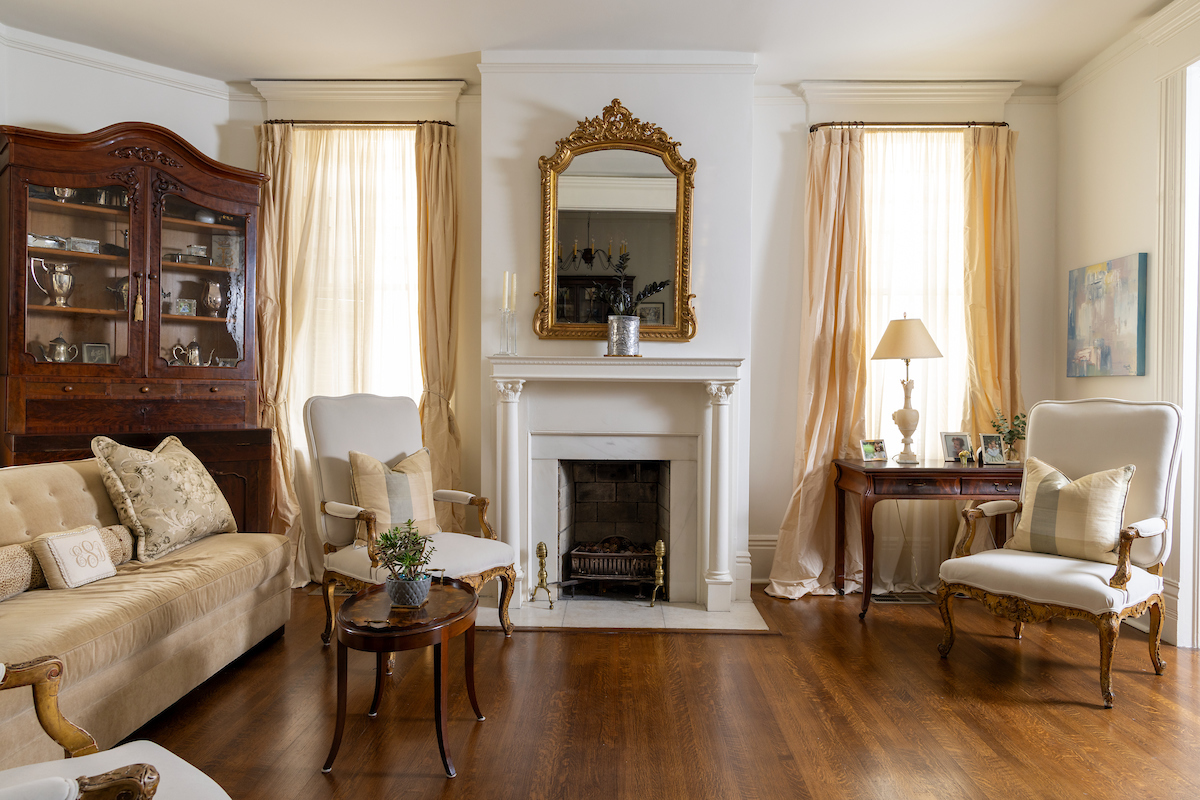Thousands of people pass by the quiet campus of Hope Haven each week — some commuting on Barataria Boulevard, the major Jefferson Parish artery, others touring for pleasure, perhaps on their way to visit the Jean Lafitte National Park to take an airboat ride or see wildlife.
Though it is built on 10 acres of land, the campus, which is owned by the Archdiocese of New Orleans, sees little activity these days, so it’s easy to miss.
Architecturally, Hope Haven is stunning, with eight historic Spanish Colonial Revival-style buildings, all built between 1925 and the early 1940s, set amidst large lawns and lush live oak trees. Hope Haven was established in 1925 by Mosignor Peter Wynhoven to shelter and educate orphans and other children in need.
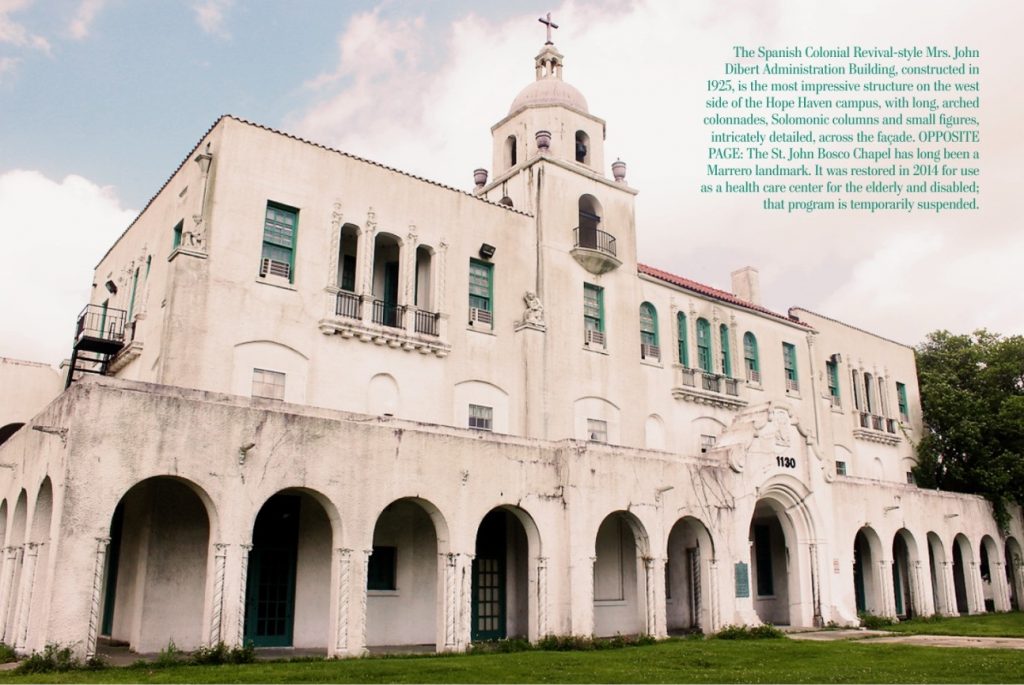
Photo by Liz Jurey
Today, much of it sits dormant — a reality that is nothing but a loss to the community of Jefferson Parish, according to State Representative Patrick Connick, who has made it his mission to see the historic campus come to life once more.
Connick knows that the site is important to many local residents — he himself has special ties to the site. His grandfather Thomas Jenniskens was called by Monsignor Wynhoven to move from his home in Holland to run the Hope Haven dairy, once located on the west side of Barataria.
But personal connections aside, revitalization of the campus is a no-brainer, an easy win, a move that would greatly benefit Jefferson Parish, according to Connick.
“[Hope Haven] is a treasure, a gem,” he said. “We don’t have many historic sites like this on the West Bank. It would be such an economic boon… we just need the financing to turn it into something.”
On the campus’ east side, the handsome and distinguished St. John Bosco Chapel stands tall. The Spanish Baroque-style former church, reminiscent of the decorative Churrigueresque style found on cathedrals throughout the New World, was for years used as a chapel for the community.
In 2014 the building received a $1.6 million restoration and began operating as an adult health care program for the elderly and disabled under the direction of PACE Greater New Orleans, an affiliate program of Catholic Charities Archdiocese of New Orleans. Post-restoration, it positively gleams.
To the right is a 1932 school building also maintained by PACE GNO. The Archdiocese gifted the two buildings to PACE, though “services have been temporarily suspended at that facility,” said Chantell Harmon Reed, Director of Enrollment & Marketing at PACE. She said PACE recently received service area expansion funding and hope to re-occupy the buildings “very soon.”
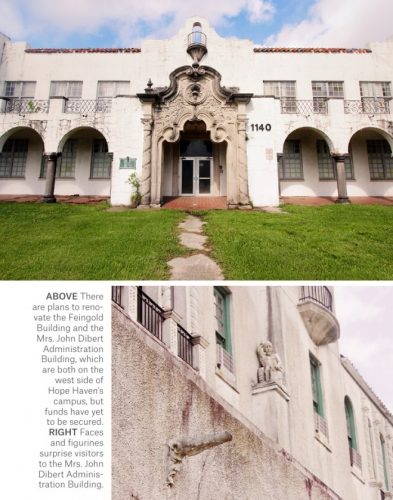
Photo by Liz Jurey
On the other side of St. John Bosco Chapel is Madonna Manor, once the living quarters for Hope Haven’s young children, which has been adaptively reused as offices and the site of Café Hope, a restaurant that doubles as a culinary and hospitality-training program for at-risk youth.
The restaurant draws a steady stream of employees and diners, and outside, a large lawn has been transformed into a bountiful urban garden by Connick and local farmer Elvay Chauvin. Much of the produce is harvested by Café Hope; the rest is sold to restaurants like Irene’s Cuisine, with proceeds going back into the garden.
Of the eight historic structures on site, those are the only three that have received work in recent years. The majority are languishing. Across Barataria Boulevard, the west side of Hope Haven campus sits vacant. The white concrete buildings are yellowed in spots from rust, and vines climb the walls.
Yet community members still see, and appreciate, their beauty.
The Mrs. John Dibert Administration Building boasts grand a colonnade with arches that, despite being covered in moss, to this day lures women and photographers for prom and wedding shots.
Constructed in 1925, the concrete building is structurally sound and retains its decorative flourishes, from spiraling Solomonic columns to fanciful scrolls and flowers. Figures of men working mark each corner of the building, reminding visitors of its original use as a trade school. On top is a bell tower, and behind, two wings conceal overgrown courtyards with tile fountains.
Distinguished local architect William R. Burk, whose collection of work includes many notable churches and rectories, designed this building, and several others on campus. His designs are housed in Tulane’s Southeastern Architectural Archive.
The Julian Saenger Gymnasium, constructed in 1930, sits nearby, as does the Feingold Building, which was until recent years used by Catholic Charities as a Food for Families site. It was shut down after being deemed “too run down,” Connick said.
“The fire department wanted to tear it down,” Connick said. He worked with others to stop the building’s demolition, passionate in his belief that a use could be found for the site.
The Archdiocese has agreed to enter into a Cooperative Endeavor Agreement with the parish, essentially allowing the parish to lease the site for a nominal cost in support of its revitalization. Though nothing has been finalized, Connick is hopeful. He has been lobbying for four years to get capital outlay funding from the state to support the restoration of the Administration and the Feingold buildings, in particular, and the Archdiocese is in favor of this funding, though it has not yet been awarded.
They said recently in a statement, “The Hope Haven campus is not only historic but very important to the people of Marrero and the surrounding area. The $3.125 million [proposed] restoration project includes…repairs and updates such as fire sprinklers, ADA access as well as interior work so that these buildings may be soon put back to work in service to the community.”
Though nothing has been made official, Jefferson Parish President Mike Yenni hopes to move parish agency offices into the site post-renovation. “If you take the architectural history out of [Hope Haven], it’s still an unbelievable site geographically, one the best we could ask for the West Bank,” he said. “But it does have incredible architectural style to it, and connection for so many West Bank residents. The bad news is that we’re not further along” in the process of making its revitalization a reality.
According to Yenni, the Jefferson Parish Fire Department is considering utilizing one of the two historic cottages on site as a local fire station. “All they would have to do would be to add on to the back of the building to park their trucks,” he said.
The additional building would be designed to match the campus. The fire department has “the need and the finances” to transform the cottage, and local architect Joey Murray, who surveyed the site on behalf of the fire department, deemed the buildings to be structurally sound, Connick said.
For those with even a pedestrian knowledge of the site, its revitalization makes perfect sense. “I had always noticed the outside of the buildings when driving by on Barataria,” said Cynthia Lee-Sheng, Jefferson Parish Councilwoman At-Large.
Then she got a tour, and became an advocate for reusing the site. “I was able to tour the campus and I was stunned at the magnificent beauty and condition of the aging buildings. It was apparent after speaking with many residents of the area exactly how much of an attachment they had to the campus.
“I sit in many meetings where we discuss how to bring forth a sense of place and charm to a neighborhood in order to turn it around. These historic buildings already exist for us and deserve to be enjoyed by future generations,” she said.
For now, the buildings, and the community, wait.
Take a look at amazing photos of Hope Haven by Liz Jurey below, or click here to view the gallery on Flickr.
[flickr_set id=”72157672258076181″]




